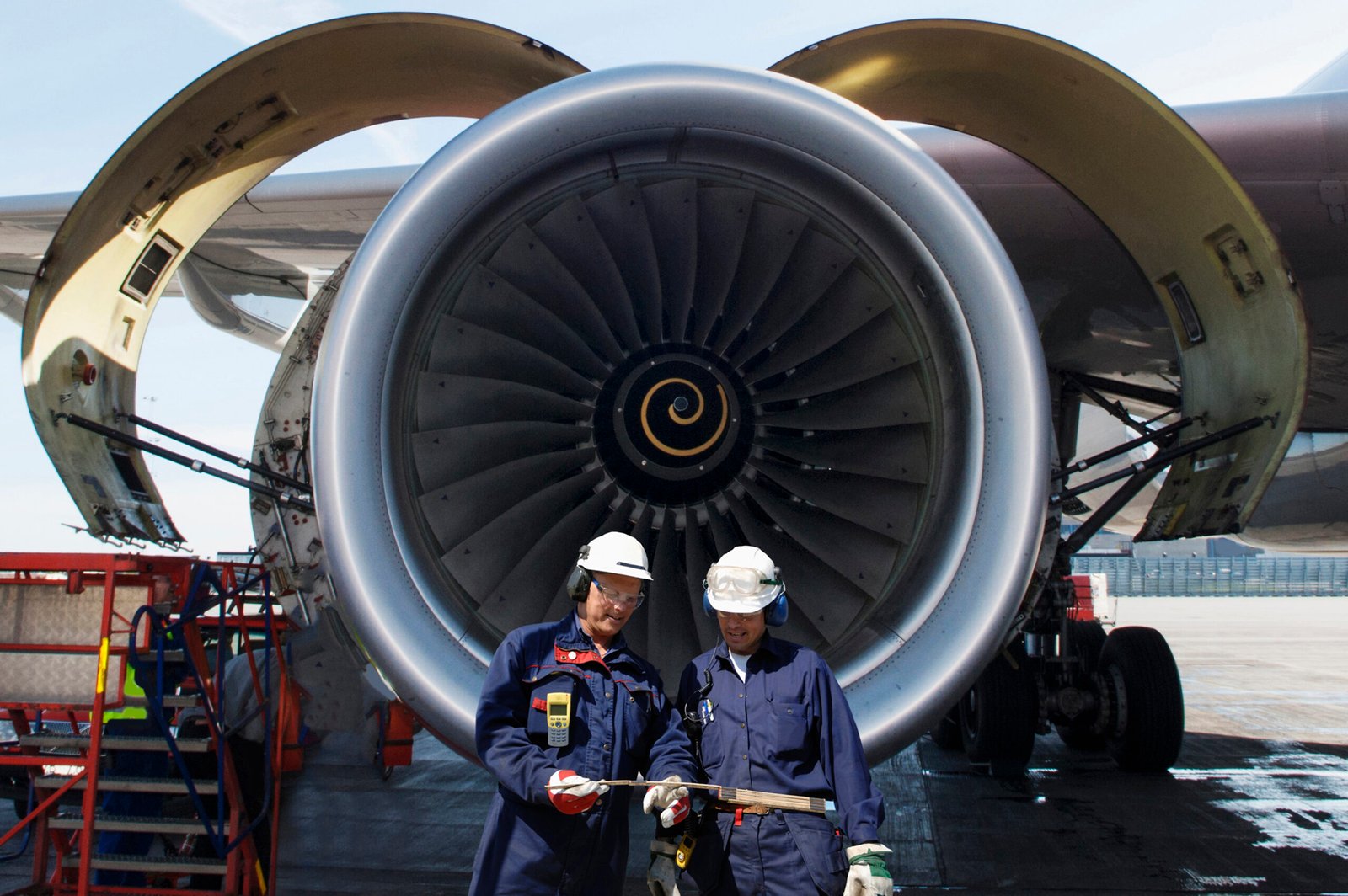Simulators
The Future of Flight: Innovations Shaping the Aviation Industry
As we soar into a new era of aviation, an array of innovations is transforming how we think about flight. From advanced training methodologies to cutting-edge technology in aircraft design, the possibilities are endless. In this blog post, we’ll explore the types of aviation schools available today and highlight essential resources for aspiring aviators.

### Aviation Schools by Types of Courses
Aviation education has diversified dramatically over recent years, accommodating various career paths within the industry. Here are some notable types of courses you might find:
1. **Pilot Training Programs**: These programs focus on teaching students how to fly different aircraft. They typically include ground school lessons covering aerodynamics, meteorology, navigation, and regulations, followed by actual flight training with certified instructors.
2. **Aircraft Maintenance Engineering**: For those intrigued by the mechanical side of aviation, these courses cover everything from basic avionics to complex systems maintenance. Students learn essential skills that ensure airplanes remain safe and efficient.
3. **Air Traffic Control Training**: This specialized program prepares individuals for one of the most demanding roles in aviation—managing air traffic safely and efficiently. Students undergo rigorous training that combines theoretical knowledge with practical simulations.
4. **Aviation Management Degrees**: Focusing on the business aspect of flying, these courses delve into airport operations, airline management, and regulatory issues affecting the industry. Graduates often find themselves well-prepared for leadership roles in various sectors.
5. **Commercial Drone Operations**: With drones becoming increasingly prevalent in many industries—from agriculture to photography—courses focusing on drone piloting are gaining popularity. They teach students about regulations and operational protocols specific to unmanned aerial vehicles (UAVs).
### Lists of Aviation Blogs, Websites, Social Media Sites
The digital landscape is teeming with valuable resources for aviation enthusiasts and professionals alike. Here’s a curated list to help you navigate through it all:
**Blogs**:
– *AirlineReporter*: Focuses on airline news and travel experiences.
– *Flying Magazine*: Offers insights ranging from pilot tips to aircraft reviews.
– *Jetwhine*: An engaging take on aviation topics including technology advancements.
**Websites**:
– *AOPA (Aircraft Owners and Pilots Association)*: A hub for pilots seeking resources and advocacy.
– *FlightAware*: Real-time information about flights worldwide.
– *AvGeekery*: Celebrates all things aviation with articles that captivate enthusiasts.
**Social Media Sites**:
– Instagram accounts like @aviationdaily provide stunning visuals from around the world.
– YouTube channels such as *Mentour Pilot* break down complex topics into digestible content.
– Twitter handles like @FlyByWireSim keep followers updated on simulation innovations.
### FAA Flight Schools/Airplane Schools/Simulators
When it comes to formal education in flying or maintaining aircraft, FAA-approved schools lead the charge. These accredited institutions meet stringent safety standards while providing quality instruction across various disciplines:
Many FAA flight schools offer integrated programs where students can earn their private pilot licenses alongside advanced certifications like instrument ratings or commercial licenses.
Notably, airplane schools often incorporate simulator training into their curricula—an invaluable tool that allows students to practice emergency procedures without risk while gaining critical experience navigating various flight scenarios under realistic conditions.
In summary, as technological advancements continue reshaping the skies above us, so too does our approach to learning within this dynamic field. Whether you’re interested in flying high or keeping planes soaring smoothly through meticulous maintenance work or effective traffic management—the future is bright! Embrace these educational pathways and be part of the exciting evolution occurring within the world of aviation!
Soaring High: The Future of Sustainable Aviation Technologies
As the aviation industry faces mounting pressures to reduce its environmental footprint, innovative technologies are emerging that promise to revolutionize the way we fly. From electric aircraft to sustainable fuels and advanced air traffic management systems, the future of aviation is not just about reaching new heights but doing so responsibly. However, as we look toward this greener horizon, it’s essential to equip ourselves with knowledge and skills through specialized education.
*Aviation Schools: Types of Courses**
Education plays a critical role in cultivating the next generation of aviation professionals who will steer these advancements. Aviation schools offer a diverse range of courses tailored to various interests within the field. Here’s a glimpse into some popular types:

1. **Pilot Training Programs**: These programs focus on preparing aspiring pilots for both private and commercial flying careers. Students learn essential flight maneuvers, navigation techniques, and aviation regulations.
2. **Aircraft Maintenance Technology**: This course trains students in maintaining and repairing aircraft systems. Knowledge in this area is vital for ensuring safety and efficiency in operations.
3. **Aviation Management**: For those interested in the business side of aviation, this course covers airport management, airline operations, and logistics—essential for running a sustainable operation.
4. **Air Traffic Control Programs**: These intensive courses prepare individuals for managing air traffic effectively while considering fuel efficiency and minimizing delays.
5. **Sustainable Aviation Technologies**: A newer field of study focusing on eco-friendly practices such as biofuels, electric propulsion methods, and carbon offsetting strategies.
With these varied educational paths available, prospective students can find their niche while contributing to an evolving industry focused on sustainability.
*Aviation Blogs, Websites & Social Media Sites**
Staying informed about advancements in sustainable aviation is vital for enthusiasts and professionals alike. Here are some notable blogs and websites:
**Air Transport World**: An excellent source for industry news covering everything from airlines’ financials to technological innovations.
**Flying Magazine Blog**: Offers insights into pilot training tips alongside features about sustainable flying practices.
**The Air Current**: Delves deep into airline strategies and market trends with a focus on innovation.
**General Aviation News**: Provides updates on general aviation events combined with discussions about green initiatives.
Social media platforms are also bustling hubs of information:
On Twitter, follow accounts like @AeroNews or @FLIGHTGLOBAL for real-time updates.
LinkedIn groups related to aviation technology often share articles discussing ongoing research and development efforts toward sustainability.
Instagram pages like @sustainableaviation highlight eco-friendly achievements within the industry through stunning visuals.
These resources can keep you engaged with current trends while fostering connections with like-minded individuals passionate about green flying solutions.
*FAA Flight Schools/Simulator Training**
The FAA plays an integral role in regulating flight training standards across the United States—ensuring safety while fostering innovation through various flight schools equipped with state-of-the-art simulators that mimic real-world flying conditions without leaving the ground.
Flight schools endorsed by the FAA not only teach fundamental piloting skills but increasingly include modules dedicated to understanding sustainable practices such as energy-efficient flying techniques or alternative fuel utilization during training scenarios.
Simulators provide invaluable experience; they allow pilots-in-training to explore complex situations safely while honing their skills before taking off into actual skies filled with challenges—and opportunities—to implement green technologies effectively.
In conclusion, as we navigate toward a more sustainable future in aviation technology—grounded firmly by education—we find hope soaring high above us! Whether you’re embarking on your journey through one of many specialized courses or engaging with communities online dedicated to innovation in our skies—the path forward is bright indeed!
The Sky’s the Limit: Exploring the Future of Aviation Technology
As we soar into an era defined by rapid technological advancements, aviation is on the brink of a transformative leap. The future promises not just innovations in aircraft design and performance but also profound changes in how aspiring aviators are trained. For those eager to take to the skies, understanding the diverse pathways available through aviation schools can be a game-changer.
Aviation education is not one-size-fits-all; it encompasses various types of courses that cater to different interests and career goals. **Pilot training programs**, for instance, are often the most sought after. These typically include Private Pilot Certificates, Instrument Ratings, and Commercial Pilot Licenses. For those drawn to behind-the-scenes operations, **air traffic control courses** offer specialized training in managing air traffic safely and efficiently. Additionally, **aviation management programs** provide insights into the business side of flying—perfect for future executives looking to steer airlines or airports.
If your passion leans towards engineering or technology, consider enrolling in **aviation maintenance technician programs**. These courses dive deep into aircraft systems and maintenance protocols, ensuring safety remains paramount. Furthermore, with drone technology rising exponentially in popularity, many institutions now offer courses specifically focused on Unmanned Aircraft Systems (UAS). This exciting area is shaping up to be a cornerstone of modern aviation.

Navigating this educational landscape requires reliable resources to stay informed about industry trends and technologies. A plethora of aviation blogs and websites can offer insightful perspectives on everything from policy changes to emerging tech innovations. Some standout blogs include *AirlineReporter*, which keeps enthusiasts updated on airline news with a touch of humor and personal anecdotes. Meanwhile, *The Air Current* dives deep into industry analysis with expert opinions that can shape your understanding of the market.
Social media platforms also serve as vibrant communities for aviation lovers. LinkedIn groups focused on specific sectors—like commercial piloting or aerospace engineering—provide networking opportunities that could lead directly to job prospects post-graduation. Instagram features stunning imagery from pilots showcasing breathtaking views from above #AvGeek style; follow accounts like @FlyingWithFish or @FlightChops for daily inspiration!
For hands-on experience essential for becoming a skilled pilot or technician, pursuing an FAA-approved flight school is critical. Many flight schools across the country meet rigorous standards set by the Federal Aviation Administration (FAA), ensuring students receive top-notch training in both practical skills and safety protocols. Schools like *ATP Flight School* offer accelerated programs designed for those who want to earn their licenses swiftly while still being thorough in their instruction.
In addition to traditional flight schools, innovative simulator training facilities have emerged as vital resources for developing skills without leaving the ground. Advanced simulators replicate real-world flying conditions without risking lives or aircraft; they allow students to practice emergency procedures extensively before taking off solo.
As we look ahead at all these developments within aviation education and technology—whether it’s through traditional schooling methods or cutting-edge simulation—it’s clear that we’re only beginning our journey toward redefining what it means to fly.

In conclusion, whether you’re aiming high as a pilot or grounded in management roles within aviation industries, there’s no shortage of paths to explore—the sky truly is limitless! Embrace these opportunities as they unfold—they might just pave your way toward soaring success!
The Skyline Promise: Exploring the Fascinating World of Urban Air Mobility
The horizon is shifting, and with it comes an exhilarating revolution in aviation—urban air mobility (UAM). This dynamic field blends cutting-edge technology with the promise of transforming how we navigate our cities. As we delve into this fascinating world, it’s essential to understand that the future of flight not only relies on innovative aircraft but also on a robust foundation built through aviation and technology training.

To embark on this journey, aspiring aviators must familiarize themselves with various educational avenues. Traditional flight schools have long served as pillars for pilot training, but now they are evolving alongside new technologies. The Federal Aviation Administration (FAA) has recognized the importance of adapting to these changes by accrediting numerous flight schools across the country that focus on emerging sectors like UAM. These institutions offer comprehensive programs that include hands-on experience with cutting-edge simulators and real-world flying scenarios.
Simulators play a crucial role in modern pilot training; they provide invaluable opportunities for students to hone their skills without stepping foot into an actual aircraft. With advancements in virtual reality (VR) and computer-generated environments, pilots can practice complex maneuvers or emergency protocols safely and effectively. Schools such as Embry-Riddle Aeronautical University and ATP Flight School are at the forefront, integrating technology into their curricula to produce highly skilled pilots ready for tomorrow’s challenges.
In addition to formal education, staying informed about industry trends is vital for anyone passionate about aviation and urban air mobility. Engaging with online communities can enhance your knowledge base immeasurably. There’s a wealth of resources available through blogs, websites, and social media platforms dedicated to aviation enthusiasts.
Some noteworthy blogs include:
1. **Flying Magazine** – A classic source offering insights into both recreational flying and technical advancements.
2. **Air & Space Magazine** – Delves deeper into aeronautics history while keeping readers updated on contemporary innovations.
3. **PILOT Magazine** – Focused specifically on pilots’ experiences, gear reviews, and operational tips.
For those who prefer websites over traditional blogging formats, consider visiting:
**Aviation Week Network** – Comprehensive coverage of all things aerospace including commercial aviation updates.
**AvGeekery.com** – A hub for passionate aviation geeks showcasing everything from airline news to aircraft spotting tips.
Social media platforms are also treasure troves for real-time information and community interaction within the aviation sphere:
**Instagram** boasts aerial photography accounts that showcase stunning views from above.
**Twitter** serves as a fast-paced platform where industry professionals share breaking news.
**YouTube channels like “Mentour Pilot” or “Captain Joe” provide engaging visuals coupled with informative commentary about flying.
As urban air mobility continues its ascent—the promise of personal drones zipping through cityscapes becoming more tangible—it is imperative that budding aviators embrace both traditional learning paths and modern digital landscapes.
With every new innovation comes responsibility; thus, pursuing quality education remains paramount in ensuring safety within UAM systems. Whether you’re navigating through FAA-accredited flight schools or exploring dynamic online resources—a commitment to continuous learning will prepare you for this remarkable shift in how we view transportation.
So strap in! The skyline awaits your exploration—a mesmerizing blend of technology promising a future where urban skies become just as bustling as city streets below!
Flying Into the Future: The Latest Innovations in Aviation Technology
The aviation industry stands on the brink of a technological revolution, blending tradition with cutting-edge innovations. From training pilots with advanced simulators to the rise of drones and online learning platforms, the future is taking flight in ways we could hardly imagine just a decade ago. Let’s delve into some of the latest advancements transforming how we approach aviation.

*Aviation and Technology Training: Simulators**
Gone are the days when aspiring pilots had to rely solely on real aircraft for training. Today, flight simulators have become an integral component of pilot education. These sophisticated tools replicate real-world flying conditions with stunning accuracy, allowing trainees to experience everything from routine maneuvers to emergency situations without leaving the ground.
Modern simulators incorporate virtual reality (VR) technology, making training sessions immersive and realistic. Learners can engage in simulated flights that mimic weather changes or mechanical failures, thus better preparing them for actual flight scenarios. This innovative training not only enhances safety but also optimizes costs associated with traditional flight instruction.
*Essential Aviation Blogs and Resources**
For those who want to stay informed about ongoing developments in aviation technology, numerous blogs and websites serve as valuable resources:
1. **The Points Guy** – Focuses on travel tips and airline news.
2. **Airliners.net** – A community-driven site showcasing photos and discussions on aviation topics.
3. **Aviation Week** – Offers insights into aerospace trends, technology advancements, and industry analysis.
4. **FlightGlobal** – Provides updates on airlines, aircraft manufacturers, and regulatory changes.
5. **Jetwhine** – A mix of opinions on aviation issues along with entertaining stories from pilots.
Social media platforms like Twitter feature hashtags such as #AvGeek or #PilotLife that connect aviation enthusiasts globally. Following accounts of airlines, flight schools, or influential aviators can keep you updated while also building your network within this exciting field.
*Online Aviation Courses: Ground Schools & Careers**
The advent of online education has made it easier than ever to pursue a career in aviation without geographical constraints. Many organizations offer comprehensive online courses that cover foundational knowledge essential for aspiring pilots or those looking to start careers in ground operations.
These courses often include Ground School programs that prepare students for FAA certification exams while providing flexible scheduling options—ideal for busy individuals juggling work and study commitments. Platforms like Coursera or Udemy host various programs ranging from introductory pilot training to specialized subjects such as air traffic control or aircraft maintenance.
With growing demand for qualified pilots due to global travel resuming post-pandemic, many airlines actively recruit trained professionals through dedicated job boards like PilotJobs.com or Avjobs.com.
*The Drone Revolution**
Drones have emerged as one of the most intriguing facets of modern aviation technology. With applications ranging from aerial photography to package delivery and agricultural surveillance, these unmanned aerial vehicles (UAVs) are reshaping industries across the board.
Regulatory bodies like the Federal Aviation Administration (FAA) provide guidelines around drone usage ensuring safety while promoting innovation in this sector. Their website offers comprehensive resources about drone registration processes along with information concerning Part 107 licensing—a must-have for commercial drone operators.
In conclusion, as we fly into an exciting future where technology meets traditional practices within aviation, staying updated through reliable sources becomes vital for enthusiasts and professionals alike. Whether it’s embracing simulator training or exploring online courses tailored specifically for aviation careers—or even navigating the new world of drones—the sky truly is not the limit; it’s just the beginning!





